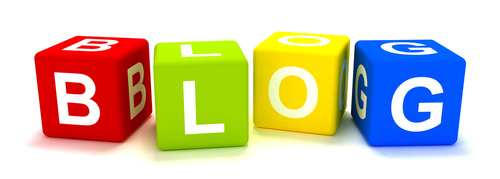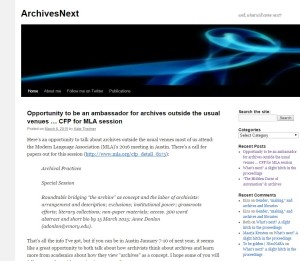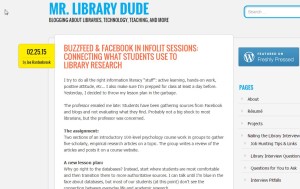This past semester has definitely been a learning experience for me and has got me to thinking more about my future as an LIS professional. I came into the MLIS program with a narrow view of what LIS professionals do and what their options were for employment. Since my track is archival administration, my only knowledge prior to joining the program was what archivists do and the types of companies or organizations that they could work for. However, taking LIS 6010 really broadened my view of the entire LIS profession as well as how important libraries are to society and how they function. The first discussion question in the class was to reflect on my experience with libraries and to define exactly what a library is. At the time, I just gave a broad definition of what a library is from my perspective. But, throughout the class and from the assignments I have done, I have learned that libraries are more than just a place to check out books. They serve as a vital resource for diverse group of patrons and they do their best to provide a variety of activities and educational sources for their core demographic.
A sentence I read in chapter one of “The Portable MLIS” really stood out to me and it really sums up the role of libraries in our lives.
“Libraries are not important: they are essential. Libraries are about what we think and do. They are about who we were, who we are, and who we want to be” (Rubin, 2008).
I did not think about the influence libraries have had on my life until taking this course and while my goal is to become an archivist, I would be honored to work in a library setting and strive to give back just a fraction of what library staff have given to me. Actually, one of the archival collections I would love to work for is located in the Detroit Public Library. The E. Azalia Hackley Collection is one of five special collections at the Detroit Public Library that is composed of materials from African American artists in various professions such as art, music and dance. For my class project on LIS Agencies, I chose to investigate the Hackley Collection and in the process I was able to interview the head curator for the collection and learn a lot more about the materials as well as the daily responsibilities of the curator. This assignment was definitely a learning experience and it helped me to get a better idea of what it is that archivists and curators do on a daily basis. I am looking forward to interning at the Hackley Collection soon and the project I did on the collection will really help me as an intern. I’ll already come into the internship knowing more about the collection and the type of work that I will be doing with the curator.
Now that I have taken some of the introductory classes in the MLIS program, I am excited about starting my core classes in the fall, one of which will be the Archival Administration course. This course will teach me the foundations of being an archivist and the type of work that I will be doing once I start my career. By now, everyone who has read this blog knows that I am working towards a degree in MLIS with a concentration on Archival Administration. My ultimate goal is to work as a music archivist at a museum or information agency that specializes in music. Although my track my be different than many of my colleagues, some of whom I know will be working as librarians in various settings, this class has shown me that although every MLIS graduate’s ultimate work setting may be different, we all have similar goals in our profession and that is to serve the public with the highest level of service possible.
SOURCE
Rubin, R. (2008). Stepping Back and Looking Forward: Reflections on the foundations of libraries and librarianship. In Portable MLIS. Libraries Unlimited.





 Instagram is another social media tool that libraries can use to their advantage. The intended audience for Instagram is ages 16-35, and in libraries this tool is used to engage with library patrons, connect with other libraries and organizations, and advertise/market events in library from a visual perspective. Some of the advantages of Instagram is that it gives the library patrons more of a visual perspective of the library’s marketing of stories and events and it can attract people easier than if they are just reading a status or post. On the downside, since Instagram is still fairly new, it has not attracted a wider range of age groups and is mainly used by younger people, so it may not help libraries to put all their work into building an Instagram following when their demographic may be older.
Instagram is another social media tool that libraries can use to their advantage. The intended audience for Instagram is ages 16-35, and in libraries this tool is used to engage with library patrons, connect with other libraries and organizations, and advertise/market events in library from a visual perspective. Some of the advantages of Instagram is that it gives the library patrons more of a visual perspective of the library’s marketing of stories and events and it can attract people easier than if they are just reading a status or post. On the downside, since Instagram is still fairly new, it has not attracted a wider range of age groups and is mainly used by younger people, so it may not help libraries to put all their work into building an Instagram following when their demographic may be older.







 writers. The publication covers material about the LGBT community, issues dealing with sex, indie art based events, all of which is content that is often ostracized by mainstream news outlets.
writers. The publication covers material about the LGBT community, issues dealing with sex, indie art based events, all of which is content that is often ostracized by mainstream news outlets.
